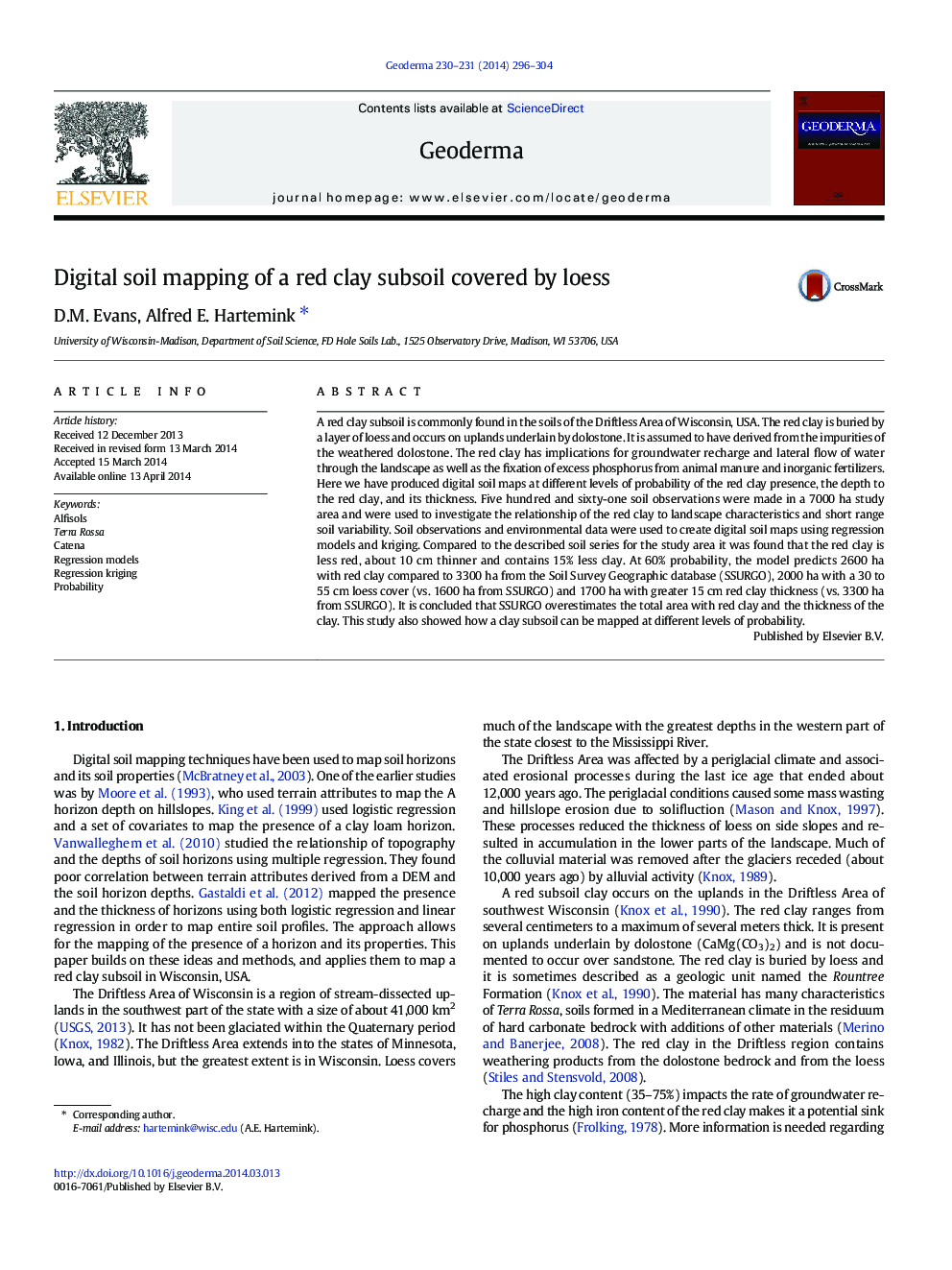| کد مقاله | کد نشریه | سال انتشار | مقاله انگلیسی | نسخه تمام متن |
|---|---|---|---|---|
| 4573256 | 1629470 | 2014 | 9 صفحه PDF | دانلود رایگان |
• Digital soil maps were produced of the red clay presence, the depth to the red clay, and its thickness.
• Probabilities were calculated for the red clay presence, the depth and thickness.
• Compared to the described soil series the clay is less red, thinner and has a lower clay content.
• In this area, SSURGO overestimates the total area with red clay and the thickness of the clay.
A red clay subsoil is commonly found in the soils of the Driftless Area of Wisconsin, USA. The red clay is buried by a layer of loess and occurs on uplands underlain by dolostone. It is assumed to have derived from the impurities of the weathered dolostone. The red clay has implications for groundwater recharge and lateral flow of water through the landscape as well as the fixation of excess phosphorus from animal manure and inorganic fertilizers. Here we have produced digital soil maps at different levels of probability of the red clay presence, the depth to the red clay, and its thickness. Five hundred and sixty-one soil observations were made in a 7000 ha study area and were used to investigate the relationship of the red clay to landscape characteristics and short range soil variability. Soil observations and environmental data were used to create digital soil maps using regression models and kriging. Compared to the described soil series for the study area it was found that the red clay is less red, about 10 cm thinner and contains 15% less clay. At 60% probability, the model predicts 2600 ha with red clay compared to 3300 ha from the Soil Survey Geographic database (SSURGO), 2000 ha with a 30 to 55 cm loess cover (vs. 1600 ha from SSURGO) and 1700 ha with greater 15 cm red clay thickness (vs. 3300 ha from SSURGO). It is concluded that SSURGO overestimates the total area with red clay and the thickness of the clay. This study also showed how a clay subsoil can be mapped at different levels of probability.
Journal: Geoderma - Volumes 230–231, October 2014, Pages 296–304
